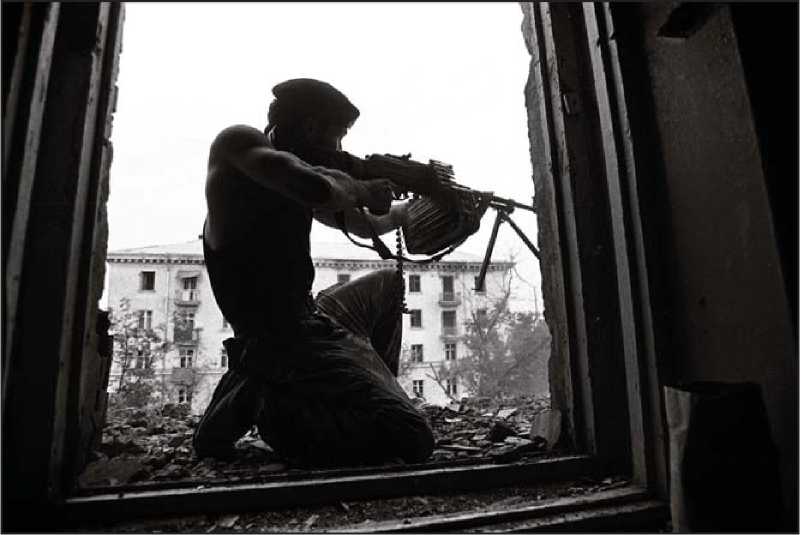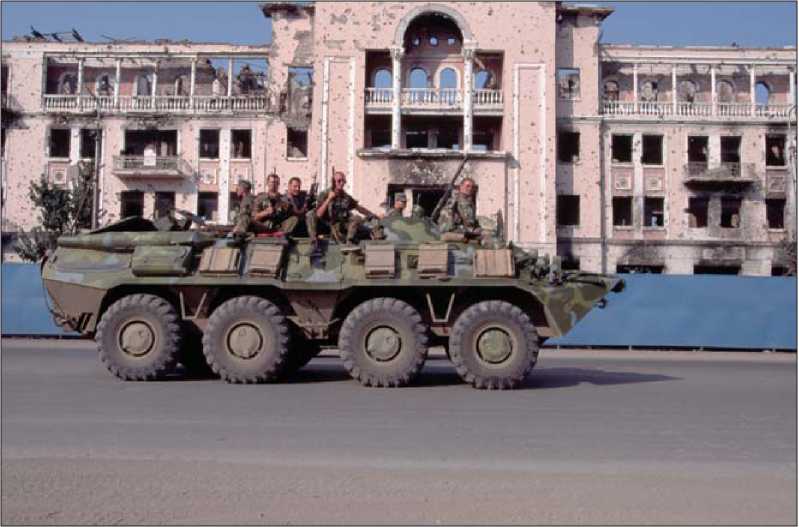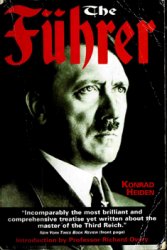The Russians' assumption was that seizing Grozny would mean the end of the war.
This planning decision showed not only that they had forgotten the experiences of past wars with the Chechens, or even the Soviet invasion of Afghanistan in 1979; it also drove them to try to push towards and into the city more quickly than

They should. Federal forces were gathered in a special Joint Grouping of Forces (OGV) that was predominantly made up of units from the Armed Forces and the MVD, but also included FSB units (including some Border Troops, subordinated to the FSB), elements of the separate Railway Troops and detachments from the Ministry of Emergency Situations (MChS). Co-ordination between these various forces was inevitably going to be problematic, especially as the preparations had been hurried, and this was another factor behind the relatively simple 'drive to Grozny'.
The plan was that these taskforces would push directly to Grozny and surround it. While MVD troops locked down the countryside, Armed Forces units would assault the city from north and south, seizing key locations such as the Presidential Palace, main railway station and police headquarters before the Chechens had had the chance to prepare proper defences, and then mop up any remnants of Chechen resistance as remained. However, the plan ran into problems from the first. The three taskforces - which had had to advance along multiple routes because of the geography and the width and quality of roads - all failed to keep to schedule, so Grozny was never effectively blockaded, especially to the south, allowing its defenders to be reinforced with volunteers and raising their numbers to perhaps 9,000 by the height of the battle. With the Russian first wave only numbering some 6,000 men, given the advantages for the defence in urban warfare, this was a serious development for the federal forces. They were to have to throw substantially more into the fray before they eventually took the city and levelled much of it in the process.
The Chechens had also had longer than anticipated to prepare. Under military chief of staff Aslan Maskhadov, the Chechens established three concentric defensive rings and had turned much of the centre of the city into a nest of ad hoc fortifications. Buildings were sandbagged and reinforced to provide firing positions, while - knowing the Russian propensity for the direct attack - the few tanks and artillery pieces the Chechens had were emplaced to command those roads wide enough for an armoured assault, notably Ordzhonikidze Avenue, Victory Avenue and Pervomayskoye Avenue. Further out, there were defensive positions at choke-points such as the bridges across the Sunzha River, as well as around Minutka Square south of the centre.
The Russian plan called for assault elements of the 81st and 255th Motor Rifle regiments to attack from the north under Lieutenant-General Konstantin Pulikovsky, supported by the 131st Independent Motor Rifle Brigade and 8th Motor Rifle Regiment. Meanwhile, elements from the 19th Motor Rifle Division under Major-General Ivan Babichev would move in from the west, along the railway tracks to seize the central station and then advance on the Presidential Palace from the south. From the east, Major-General Nikolai Staskov would lead assault units from the 129 th Motor Rifle Regiment and a battalion of the 98th Airborne Division again along the railway line to Lenin Square and thence capture the bridges across the Sunzha River. From the north-east, elements of the 255th and 33rd Motor Rifle regiments and 74th Independent Motor Rifle Brigade under Lieutenant-General Rokhlin would take the central hospital complex, from where they could support other advances.
OGV commanders in the First Chechen War
1994-95 Colonel-General Alexei Mityukhin (Armed Forces)
1995 General Anatoly Kulikov (MVD)
1995 Lieutenant-General Anatoly Shkirko (MVD)
1996 Lieutenant-General Vyacheslav Tikhomirov (Armed Forces) 1996 Lieutenant-General Vladimir Shamanov (Armed Forces)

An Armed Forces BTR-80 armoured personnel carrier in Grozny 1 August 1995. It was common for troops to ride or rather than inside their vehicles in high-risk environments since, not least because - despite improvements from the earlier BTR-60/70 models - it is still difficult to disembark from a BTR if it is hit by a mine or rocket. (© Jon Spaull/CORBIS)
Finally, units from the 76th and 106th Airborne divisions would be deployed to prevent the rebels from firing the Lenin and Sheripov oil-processing factories or chemical works, as well as blocking efforts by the rebels to attack the assault units from behind.
The attack began on 31 December after a preparatory air and artillery bombardment and soon ran into trouble as Chechen resistance proved fiercer than anticipated.
The western advance soon bogged down in fierce street-to-street fighting. The eastern group was forced to detour and found itself in a kill-zone of minefields and strong-points. The northern group managed to push as far as the Presidential Palace, but there likewise found itself unable to break dogged resistance, and dangerously exposed by the failure of the other groups. Furthermore, a lack of training, the use of forces cobbled together from elements from different units and poor morale quickly proved problematic. Advances became snarled in traffic jams of armoured vehicles, friendly-fire incidents proliferated and units coming under fire showed a propensity to halt and take cover, rather than press on as intended.
Perhaps the most striking reversal was the fate of the 1st Battalion of the 131st Independent Motor Rifle Brigade, which by the afternoon of the first day had reached the main railway station and had assembled at the square outside it. There they were ambushed by well-positioned Chechen forces in buildings all around the square, which soon became an inferno of small-arms and RPG fire. When survivors fled into the station building, it was set on fire. When other elements of the 131st tried to support their comrades, they were ambushed and blocked. The battalion lost more than half its men and almost all its vehicles; in effect, it had ceased to exist.
By 3 January, the Russian attack had effectively been beaten back. Their only forces still in the city in good order were Rokhlin's group, which had not been expected to drive to the Presidential Palace and had thus avoided the worst of the fighting and had been able to dig in.
Even so, this could only be a temporary respite. The Russians redoubled their air and artillery campaign against the city, and adopted a much more cautious campaign, slowly grinding their way through the city. On 19 January, they seized the Presidential Palace - or what was left of it after it was hit by bunker-busting bombs - and although fighting would continue in the south of the city for weeks to come, Grozny had essentially fallen. But it was a ruin, strewn with the bodies of thousands of its citizens - estimates range up to 35,000 - in a bloodbath that the Organization for Security and Co-operation in Europe (OSCE) would describe as an 'unimaginable catastrophe'. This would not, however, be the last battle for this ill-fated city.
Interior Minister Anatoly Kulikov (left) and Defence Minister Igor Rodionov (right) at a press conference in October 1996 to launch a book of the names of fallen Russian soldiers in the First Chechen War. Armed Forces General Rodionov, a former commander of forces in Afghanistan, was deeply sceptical of the First Chechen War and Yeltsin’s reform priorities and would be sacked in May 1997, but the hawkish Kulikov was a key mover behind the conflict. (Vladimir Mashatin/EPA)




 World History
World History


![United States Army in WWII - Europe - The Ardennes Battle of the Bulge [Illustrated Edition]](/uploads/posts/2015-05/1432563079_1428528748_0034497d_medium.jpeg)






